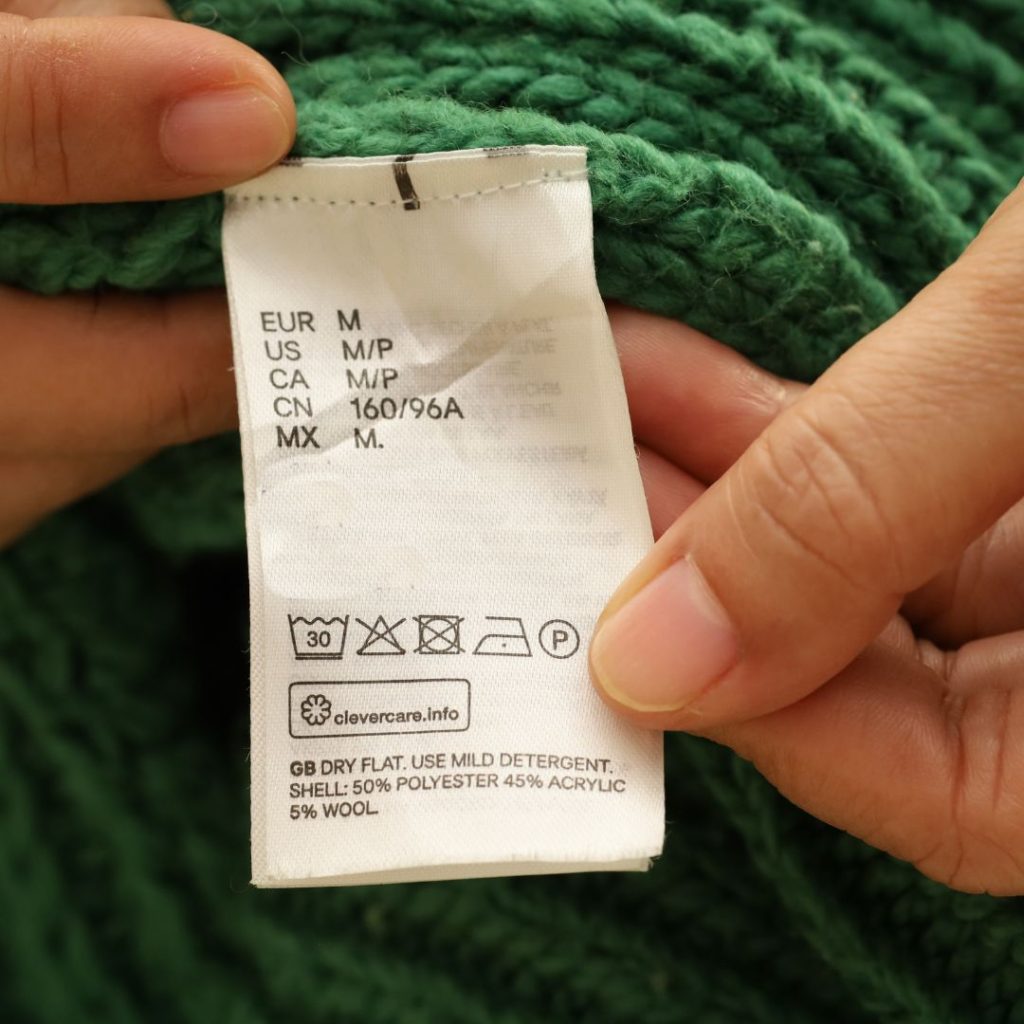Like many other industries, the fashion industry is also experiencing digitization. Representatives of the fashion industry as well as people concerned with climate change currently discussing the introduction of digital labels like QR codes or NFCs for clothes, which can be scanned by a smartphone. These digital labels will be linked to Digital IDs (Digital Product Passports), consequently providing transparent and extensive information about a garment.

Fashion’s Transparency Problem
Today, physical clothing labels offer limited information about the brand, fabric origins, production processes, material information, and care guidelines. As a result, many brands use these labels for their own purposes, obscuring controversial aspects of their production. Most often fashion brands are silent about the overconsumption of natural resources, pollution, labor exploitation, cultural appropriation, etc. (More information) Moreover, many brands, despite ignoring their unethical production practices, falsely claim to be sustainable and environmentally conscious in order to attract consumers – this phenomenon is known as greenwashing.
What Are Digital Tags?
These issues of greenwashing and the absence of transparency lead to a rethinking of how clothing companies can become more customer and environment-friendly, consequently introducing digital tags for each piece of clothing. This digital analog aims to present extensive product data. Digital labels like traditional ones will show basic details such as size information. Moreover, they will include a full history of the garment, detailing its journey from production to sale. Digital tags may also help identify the garment’s production methods, recyclability, traceability, and presence of plastic microfibers may be included which is important for efficient recycling at the end of its life cycle. Furthermore, digital tags will include certifications and extensive product care instructions. Some digital tags may even track how the piece of clothing is used after purchase, contributing to a better understanding of consumer behavior and garment life cycles. Overall, this innovation is expected to contribute to the transparency of clothing brands, raise awareness about the origins of clothes and their harm to the environment, and improve consumer-friendliness.

Digital Labels: What to Consider?
However, there are still many unanswered questions and concerns regarding the digitalization of garment labels. My concern is that, without proper regulations, these new digital labels may become just a stronger tool for greenwashing. By giving fashion brands more communication space, consumers may receive misleading information. Not to mention, the possible negative environmental impact of utilizing more plastic to successfully implement this technology in garments. Furthermore, some people are also concerned that digital tags will have integrated microchips which potentially may track consumers and collect data while compromising consumer privacy.
However, digital labels were introduced years ago and still today we don’t see further steps made by the fashion industry to integrate them. Therefore, we may think it is not beneficial. But for whom? It may not be convenient for the fashion industry, as it will need to adopt greater transparency, nor for customers, as it doesn’t provide an easy way to access useful information about potential purchases.
We tend to think that the processes of digitalization make human life easier, more convenient, and more efficient. In this case, digital labels are presented as utopian – they will solve the climate change crisis and enhance customer-friendliness. However, the critical question remains unanswered – whether digitalization will solve issues of greenwashing and climate change or just become another tool of control and marketing.
More articles:
How Digital Eco-Labels On Our Clothes Could Transform The Way We Shop


I’ve noticed that in some supermarkets, there are labels with QR codes that can be scanned to find out about the process of this food and so on. I agree with you that perhaps the fashion industry, especially fast fashion, should take this approach as well. But I’m wondering how many consumers will actually care. I think I’ve only scanned QR codes on food a few times, just out of curiosity. However, this is perhaps more like self-regulation for companies – ‘Beware! Someone will always notice your dishonesty/bad behaviour! ’